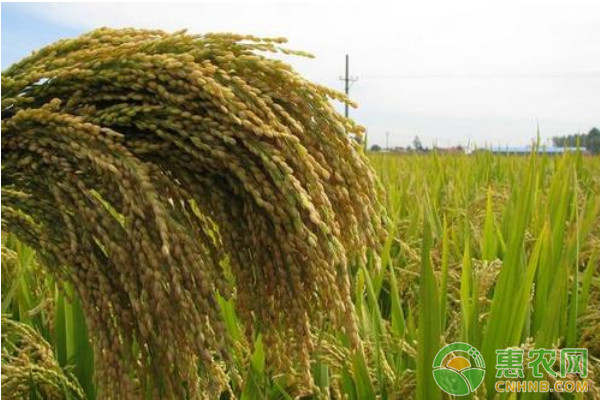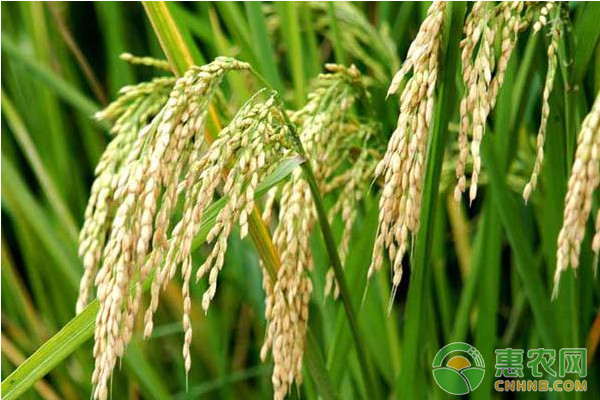Rice bacterial wilt is a physiological disease of rice, which occurs in the late rice filling stage. The emergence of green and dry in this stage will seriously affect rice grain filling, resulting in a decrease in 1000-grain weight and seed setting rate, thus affecting yield and quality. Let's take a look at the prevention and control methods of rice bacterial wilt.

1 cause
Rice bacterial wilt is caused by physiological water loss in rice. It occurs mostly in the late rice filling stage, the water cuts too early, encounters dry hot wind, and the water loss seriously leads to large area of ​​dryness; long-term deep irrigation, unsuitable field rest, shallow roots are prone to dryness; shallow soil layer, insufficient fertility, or application Nitrogen fertilizer is also prone to dryness and so on. Pests and diseases are harmful. The outbreaks of the fourth and fifth generations of rice planthoppers have caused certain damage to some of the fields that are not well controlled. Rice planthoppers are mainly concentrated on the sheaths of rice plants, and the leaf sheaths are the main organs for storage and management. Damaged by rice planthoppers, damage to the transport organization, resulting in malnutrition, poor transport, and decreased resistance to rice plants; diseases such as sclerotium sclerotiorum and rot disease caused by premature water loss in the late stage of rice can cause premature aging, aggravating The occurrence of bacterial wilt.
Improper management. After the heading, the rice plants no longer have new roots. Only the old roots are used to maintain the ability to absorb and absorb water. It is necessary to create a soil environment with fertilizer, gas and water to maintain the vitality of the roots. In particular, the root system of direct seeding rice is shallow, easy to premature aging, and more attention should be paid to post-cultivation management. The sowing amount of single-season late rice is high, the population is large, and the field permeability is poor. Some farmers apply heavy nitrogen fertilizer and partial application of seedling fertilizer, lack of organic fertilizer and potash fertilizer, lack of panicle fertilizer and granular fertilizer, and Long water irrigation, did not achieve wet irrigation, resulting in decreased root activity, induced premature aging. The amount of seeding is too large. Due to the increase in seeding rate, the basic seedlings are more than large, the population is too large, the individual is weak, the root group is too small, and the root system can not be deep, which eventually leads to the root activity is not strong and early death. Fields with heavy soils, low topography and difficult irrigation and drainage are prone to occur.
2 Several types and symptoms of rice bacterial wilt
2.1 Physiological symptoms of rice
It mainly occurs in the late rice filling stage. The leaves of the diseased plants are wilted, the blue-gray is a typical dehydration symptom, and the chaff is blue-gray and becomes a valley. It is like a green rice that has been cut and spread for 1 day. The base of the stem is shrinking, no disease spots, or muddy lodging. The disease is rapid, and there is no difference between the diseased plants and the healthy plants before the onset of the disease. During the filling period, the rice suddenly loses water and dryness, and often a large area occurs in 1-2 days, and death occurs within 2-3 days. The rice death caused by the disease is a sudden death of all the rice plants in a whole cluster, which occurs in a block form, which is different from the single-stem death of the insect pest, and is also different from the progressive death of the pathological disease.
2.2 Rice sclerotium sclerosis symptoms
There are often clusters in the field, and there are several strains in the cluster. At first, a small brown spot on the surface of the leaf sheath, and then developed into a black thin line, followed by a black centimeter-like lesion with a length of centimeters, and the internodes of the rice plant at the base of a dozen centimeters turned black, so that the tissue soft rot was lodging. The most recognizable feature: peeling off the base sheath and stem, and the inner wall can see many black sclerotia which are about 1/4 mm (smaller than amaranth).

2.3 Rice bacterial base rot
Mainly damage the rice root section and stem base. At the ear stage, the diseased plants lose water and dryness, and then form a dead ear, white ear or semi-white ear. The root section is discolored with short and few lateral roots and has a foul smell. A unique symptom of rice bacterial base rot is that the roots of the diseased plants turn brown or dark brown. Peel the base stem, sterile nucleus.
3 causes of physiological bacterial wilt in rice
Rice physiological blight is caused by physiological water loss in rice. More often in the late rice filling period. Mainly due to long-term flooding of rice fields, the roots of rice have poor vigor and water absorption capacity. In the case of fine weather and dry hot wind, the transpiration of leaves increases, the supply and demand of water is imbalanced, and the loss of water causes a large area of ​​dryness. Long-term deep-water irrigation in the early stage, field in which the field is not properly laid-off, the field with shallow roots of rice is more serious, the soil is shallow, the fertility is insufficient or the nitrogen fertilizer is heavy, the organic fertilizer and phosphorus or potassium are too late, or the nitrogen application is too late. The field is also prone to dryness. Rice fields with premature water loss or sudden storms or low temperature to sunny weather or low temperature (sudden temperature drop) are likely to cause rice bacterial wilt. At the same time, rice sclerotium disease, rice bacterial base rot, etc. can also cause premature aging of rice, aggravating the occurrence of rice bacterial wilt.
4 Rice physiological bacterial wilt prevention measures
Physiological bacterial wilt of rice in the mature stage of grouting milk seriously affects the seed setting rate and 1000-grain weight (or fullness), resulting in reduced yield and decreased rice quality. Rice bacterial wilt can not be recovered once it shows symptoms. Therefore, the disease should be highly valued. Field management should be strengthened for undeveloped fields, and appropriate preventive measures should be taken to delay premature aging, increase yield, and improve rice quality.

4.1 Scientific water management
Do a good job in the field, promote root growth, dry and wet in the later stage, prevent water from breaking too early, generally to keep the field moist to the rice yellow ripe period.
4.2 Rational fertilization
The base fertilizer should be applied, the topdressing should be applied early, avoid excessive application of nitrogen, too late, and increase the application of phosphorus and potassium fertilizer. In the early stage, compound fertilizer was added, and foliar topdressing was carried out in the later stage (100 grams of potassium dihydrogen phosphate per acre, 50 kg of water spray) to maintain root activity and enhance the resistance of rice plants.
Before the old people could not distinguish between rice blight and rice bacterial wilt, how to distinguish between prevention and control, today Xiaobian for everyone to introduce the prevention and control methods of rice bacterial wilt, I hope to be able to help farmers friends.
Shandong Chunyu Water-saving Irrigation Equipment Co., Ltd., founded in 2011, is located in Laiwu High-tech Zone, Jinan City. It is a high-tech enterprise focusing on innovative and efficient emitter mold manufacturing and emitter product research and development and production. After nearly ten years of innovation and development, it is the invisible champion enterprise in Shandong Province, and now it is in a leading position in this field in China.
Spring rain people-oriented, build talent highland. At present, the company has 16 high, fine and advanced technical personnel, and cooperates with a number of scientific research institutes, forming a mold design, emitter testing, flow testing and other professional technical personnel team. In recent years, it has obtained 3 invention patents, 33 utility model patents and 3 patent awards. In 2019, it was identified as an intellectual property advantage enterprise in Jinan. It has undertaken 4 provincial science and technology innovation projects and won 2 second prizes of Shandong Science and Technology Progress Award. The company has built Jinan drip emitter mold engineering technology research center, the company has a slow wire cutting, CNC machining center, precision EDM machine, 3D projection measuring instrument, CNC engraving, laser engraving and other advanced processing equipment. Mature technology and rich experience support the excellent quality of Chunyu. Spring Rain pays attention to every link of production, implements 8S management, strictly controls the quality of products at the beginning, the middle and the end, and forms the seamless link of production management. The company has independently researched and developed flat emitter molds with full hot runner, cylindrical emitter molds with full hot runner and other products. With excellent quality, competitive price and good after-sales service, the company is well known at home and abroad, and has been sold well in Egypt, India, Iran, Turkey, Saudi Arabia, the United States and other countries.
With the vision of "building a global professional emitter mold supplier" and the mission of "providing solutions for efficient and innovative production of global water-saving irrigation enterprises", the company takes "scientific and technological innovation to scale new heights; Keep improving, the pursuit of excellence; Honesty and trustworthiness, win-win cooperation "for the values of the enterprise. For the construction of water - saving and resource-saving society to make a positive contribution.
Inline Round Drip Mould,Inline Round Emitter Drip Mould,Inline Round Dripper Irrigation Pipe,Automatic Irrigation System
Shandong Spring Rain Water Saving Irrigation Equipment Co.,Ltd. , https://www.drippermould.com